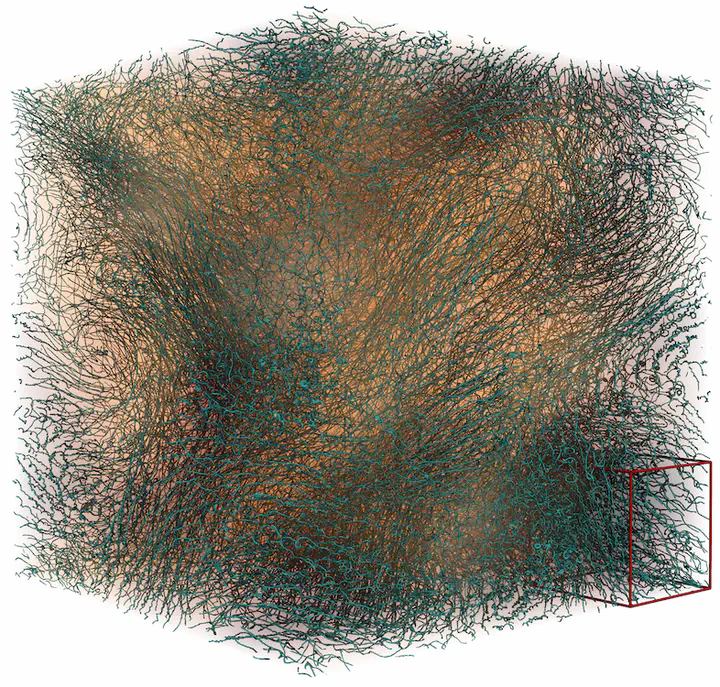
Abstract
The velocity circulation, a measure of the rotation of a fluid within a closed path, is a fundamental observable in classical and quantum flows. It is indeed a Lagrangian invariant in inviscid classical fluids. In quantum flows, circulation is quantized, taking discrete values that are directly related to the number and the orientation of thin vortex filaments enclosed by the path. By varying the size of such closed loops, the circulation provides a measure of the dependence of the flow structure on the considered scale. Here, we consider the scale dependence of circulation statistics in quantum turbulence, using high-resolution direct numerical simulations of a generalized Gross-Pitaevskii model. Results are compared to the circulation statistics obtained from simulations of the incompressible Navier-Stokes equations. When the integration path is smaller than the mean intervortex distance, the statistics of circulation in quantum turbulence displays extreme intermittent behavior due to the quantization of circulation, in stark contrast with the viscous scales of classical flows. In contrast, at larger scales, circulation moments display striking similarities with the statistics probed in the inertial range of classical turbulence. In particular, we observe the emergence of the power-law scalings predicted by Kolmogorov’s 1941 theory, as well as intermittency deviations that closely follow the recently proposed bifractal model for circulation moments in classical flows. To date, these findings are the most convincing evidence of intermittency in the large scales of quantum turbulence. Moreover, our results strongly reinforce the resemblance between classical and quantum turbulence, highlighting the universality of inertial-range dynamics, including intermittency, across these two a priori very different systems. This work paves the way for an interpretation of inertial-range dynamics in terms of the polarization and spatial arrangement of vortex filaments.
The figure above shows a high-resolution numerical simulation of a quantum turbulent flow using the generalised Gross-Pitaevskii model we introduced in this work. Vortices are displayed as thin teal-coloured filaments and small density fluctuations are rendered in brownish colours.
See also this post in the News section and the follow up paper published in Nature Communications